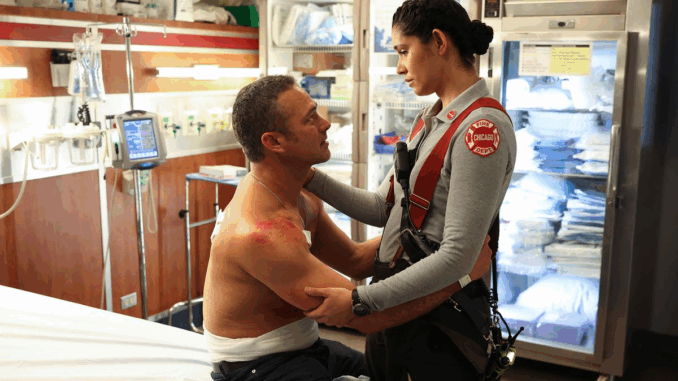
Chicago Fire has delivered its fair share of dramatic exits, but no storyline shocked fans more than the moment Matt Casey was presumed dead—only for the truth to unravel in the most explosive twist the franchise has ever pulled off.
It all started in Season 11, Episode 9. Casey, who had been working with the Department of Homeland Security in Oregon, was reported missing after an undercover operation went sideways. The next scene? Severide receiving a phone call—and dropping the phone in stunned silence. Cut to black.
For days, fans flooded forums: Was Casey dead? Was Jesse Spencer gone for good? Even the cast stayed quiet. “I can’t say anything,” Taylor Kinney teased. “But that scene… it broke us.”
The show aired a full episode mourning Casey’s apparent death. Firehouse 51 held a tribute. Brett cried over an unopened letter. Boden delivered a speech that left viewers in tears.
But the real twist came in Episode 11.
As Stella Kidd chased a tip on a related arson case, she stumbled into a burned-out safe house. And there he was.
Matt Casey. Alive.
Beaten. Bruised. But breathing.
He had faked his death to complete the mission—a rogue Homeland op to expose a domestic terror cell embedded within a volunteer firehouse in Seattle. The government ordered his silence. Even his closest friends couldn’t know.
The moment was filmed in total secrecy. Jesse Spencer reportedly flew in under an alias. His name was left off the call sheets. The scene was shot with a skeleton crew. Not even the rest of the cast saw the footage until it aired.
“Only three people knew,” said the episode’s director. “It was like we were guarding national security.”
The reaction? Explosive. The twist trended worldwide. Fans who had grieved Casey’s death suddenly found themselves screaming with joy. “It felt like being brought back to life,” one fan posted on Reddit.

And the aftermath? Complicated.
Brett wasn’t sure whether to punch Casey or kiss him. Severide questioned the ethics. Boden was furious. And Casey? He was changed—darker, more calculated, and no longer the man they remembered.
It was a twist so bold, so perfectly executed, that even Chicago Fire’s fiercest critics had to admit: they didn’t see it coming.
In a franchise full of near-deaths, breakups, betrayals, and real-world cast exits, this storyline proved one thing—One Chicago still has the power to leave jaws on the floor.
